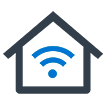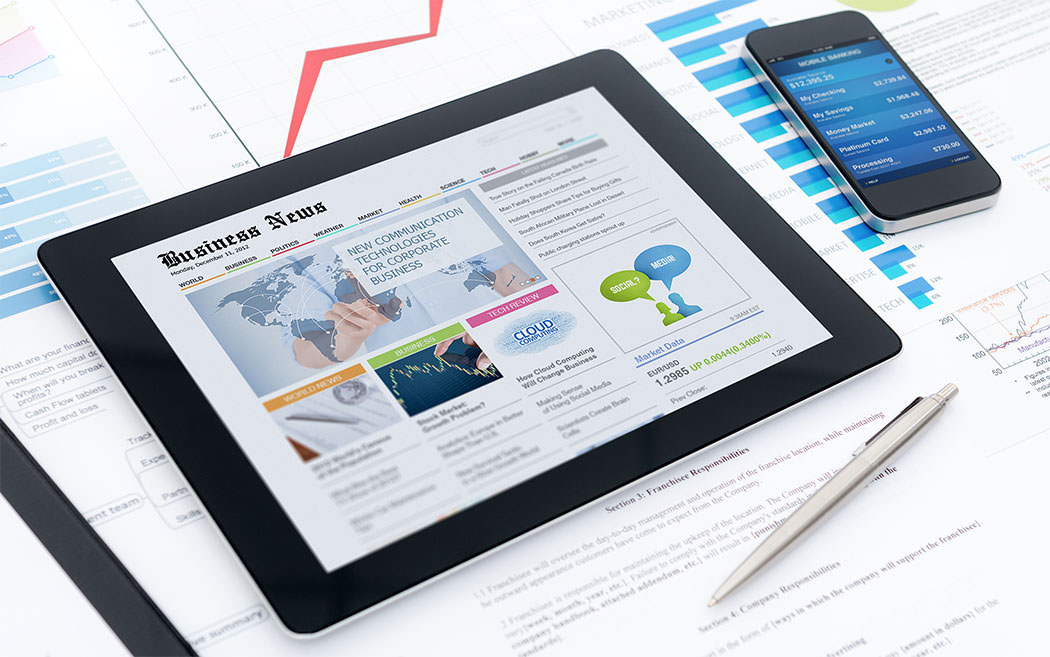With the technological advancement and launch of exciting devices people are moving ahead very quickly. The importance of iPad compatible web applications can be judged by the number of searches people make on Google, in this month alone the keyword “iPad compatible” has been searched 49,500 times. Which is the reason, iPad compatible web applications has become a huge industry. For designers it is also necessary to understand the basic concepts for designing an iPad application.
In this discussion, we would talk about the design elements and the things which should be considered when you design for an iPad compatible web application. Using our experience for designing iPad web applications, we have compiled a list for a few things which should be taken into consideration.
1 – HOME PAGE:
People are used to Home Pages they do not like it when they do not see a home page on a web application. Somehow, we also believe that Home Page is important for a web application as users can easily navigate to other pages available and also they are not disoriented.
Need to build a mobile app?
Tell us your requirements, and we’ll get back to you with a project plan for your custom built mobile app.
2 – DESIGN FOR MULTIPLE USERS:
This might sound weird but with devices like iPad it can be true. We all know that iPad does not fall in the ‘cheap’ category. The result sometimes is that family member’s share one device. A simple thing to add in the app is a place to display the current logged in user.
3 – TOUCHABLE? MAKE IT OBVIOUS:
A common mistake made by number of app designers that they forget to make interactive areas stand out. You should consider that, how will a common user know that they can get more information by tapping something on the screen if there is nothing indicating the fact? Take your time to make the interactive are large and noticeable, so that users are able to identify the different between the content and interactive areas.
4 – MAKE USE OF SPLASH SCREEN:
We all know that users want to access the desired information as quickly as possible and splash screens can become a hurdle in achieving this goal. For the case where splash screens are necessary, it is important that you keep it to the minimum time possible. In some of the cases, designers use the splash screen to display content, which is a good idea to keep the user busy and not just staring and waiting for the app to load.
5 – LOCATION OF THE USER:
You need to assume that your application user would be very busy. The user would be using the app on the go i.e. at home, office, kitchen, friend’s place, restaurant, in the car etc. You need to make sure that any of the goals you have kept for the application should not be affected by the place your app would be used. Remember, the more easy to use and accessible your app is; the more probability is that the user would be using the app frequently.
6 – STAY GOAL ORIENTED:
Efficiency and simplicity are the essence of a good iPad app. You might design and develop an app with in-depth functionality, but it would not be recommended as users might get lost in too many functions and depth of the application. The easiest way to overcome this is to write down the functionality you really want in your application and make sure it also helps the users to achieve the goals they intend to.
7 – AVOID COMPLICATED NAVIGATIONS:
We all know that eye-catching navigations are fine to use in games, but for standard and frequently used applications we would recommend to use standard navigation. Well, do not be discouraged by our recommendation, if you are very eager to use something innovative then plan accordingly and make sure that the addition is supportive to the tasks at hand.
8 – PERSONALIZE THE EXPERIENCE:
Social networks are connecting people everywhere. You can collect information of your application users (with their permission off course) through Twitter feed and Facebook updates etc. People will be happy to know that your app is smart enough to display the relevant information. Many of the applications currently use the same technique to provide the user more personalized experience.
9 – AVOID UPSETTING POP-UPS:
Pop-ups are useful in situations where you want to provide information regarding a particular thing available on the screen; however, the important thing to note is that the content should not be too large when you use pop-ups. It is recommended that if the content is large, take the user to a different screen and provide proper spacing in the content and do not squeeze everything in one small pop-up on the same screen.
10 – GESTURES, DON’T OVER USE IT:
Useful and cool gestures are very exciting to be in an iPad application. However, you do need to know where to put a break on it. iPad users know that they can use the sliding and tapping on the device and it would react accordingly. You do not need to mention this in BOLD. A slight hint like ‘Tap me for more’ or ‘Slide left to see details’ would be enough. You do not need to provide the explanation of tapping and sliding to iPad users.
CONCLUSION:
That said our list of design considerations for iPad finishes. This doesn’t mean that the list is complete, it would certainly provide you strong base to start. Remember research is the key for designing iPad applications. Explore other applications and try to find out more elements due to which some of the applications are a success and some are not. We would like to hear your input for the apps you think are successful and why…
 Web Applications
Build web apps using cutting-edge technology
Web Applications
Build web apps using cutting-edge technology
 Business Intelligence Apps
Empower your business with fast & actionable BI Apps
Business Intelligence Apps
Empower your business with fast & actionable BI Apps
 Mobile Applications
Build cross-platform apps for iOS and Android devices
Mobile Applications
Build cross-platform apps for iOS and Android devices
 Internet of Things Apps
Streamline your operations with cloud-based IoT apps
Internet of Things Apps
Streamline your operations with cloud-based IoT apps
 AI Products
Unlock the power of AI & ML with our expertise
AI Products
Unlock the power of AI & ML with our expertise
 Minimum Viable Product (MVP)
Mitigate risks & accelerate your project development
Minimum Viable Product (MVP)
Mitigate risks & accelerate your project development
 Enterprise Software
Build custom enterprise solutions for your business
Enterprise Software
Build custom enterprise solutions for your business
 Software as a Service (SaaS)
Scale your business with ease and cost-efficiency
Software as a Service (SaaS)
Scale your business with ease and cost-efficiency



